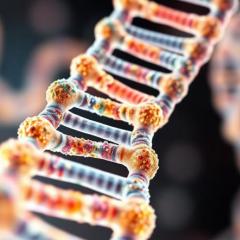by Dr Fiona McMillan
University of Queensland Diamantina Institute researchers Dr Roberta Mazzieri and Davide Moi have contributed to an important new gene therapy study published in Nature this week. Their colleagues at the Vita-Salute San Raffaele University and the San Raffaele Scientific Institute in Milan have developed a technique to edit genes in human haematopoietic stem cells (HSCs), which are the precursors of all blood cells, including immune cells.
“So far gene therapy approaches have involved adding the corrected version of a gene, but not deleting the problematic gene,” explains Mazzieri. “But this approach goes straight to the gene in question, takes it out and puts in a new one so that it’s expressed in the right place and under the right controls. It’s the ultimate goal of gene therapy.”
As a proof of concept, the researchers in Milan focussed on X-linked severe combined immunodeficiency (SCID-X1). In this disease, variations in the gene IL2RG disrupt the function of a protein essential to the growth of immune cell populations and their activity during infection. As a consequence, people with SCID-X1 are profoundly immune-compromised.
Mazzieri and Moi developed the pre-clinical model that enabled Professor Luigi Naldini and his team to determine if removing the non-functional IL2RG gene and replacing it with a functional one would bestow proper immune function in mice.
The mouse model provides the right molecular signals to trigger the activity and growth of human immune cells, but only if a working IL2RG gene is present.
The technique proved successful. In their paper, the authors explain that the gene-edited human haematopoietic stem cells gave rise to functional immune cells.
Mazzieri explains that she developed the mouse model to help her look at the interactions between human tumours and the human immune system, but is excited to see it proving so useful in the development of a gene therapy technique. She explains that the benefit of the therapeutic approach would not be limited to SCID-X1 patients.
“This strategy could be applied to any single-gene disease that has to do with haematopoietic cells.”
MEDIA: Kate Templeman on 0409 916 801 or k.templeman@uq.edu.au



